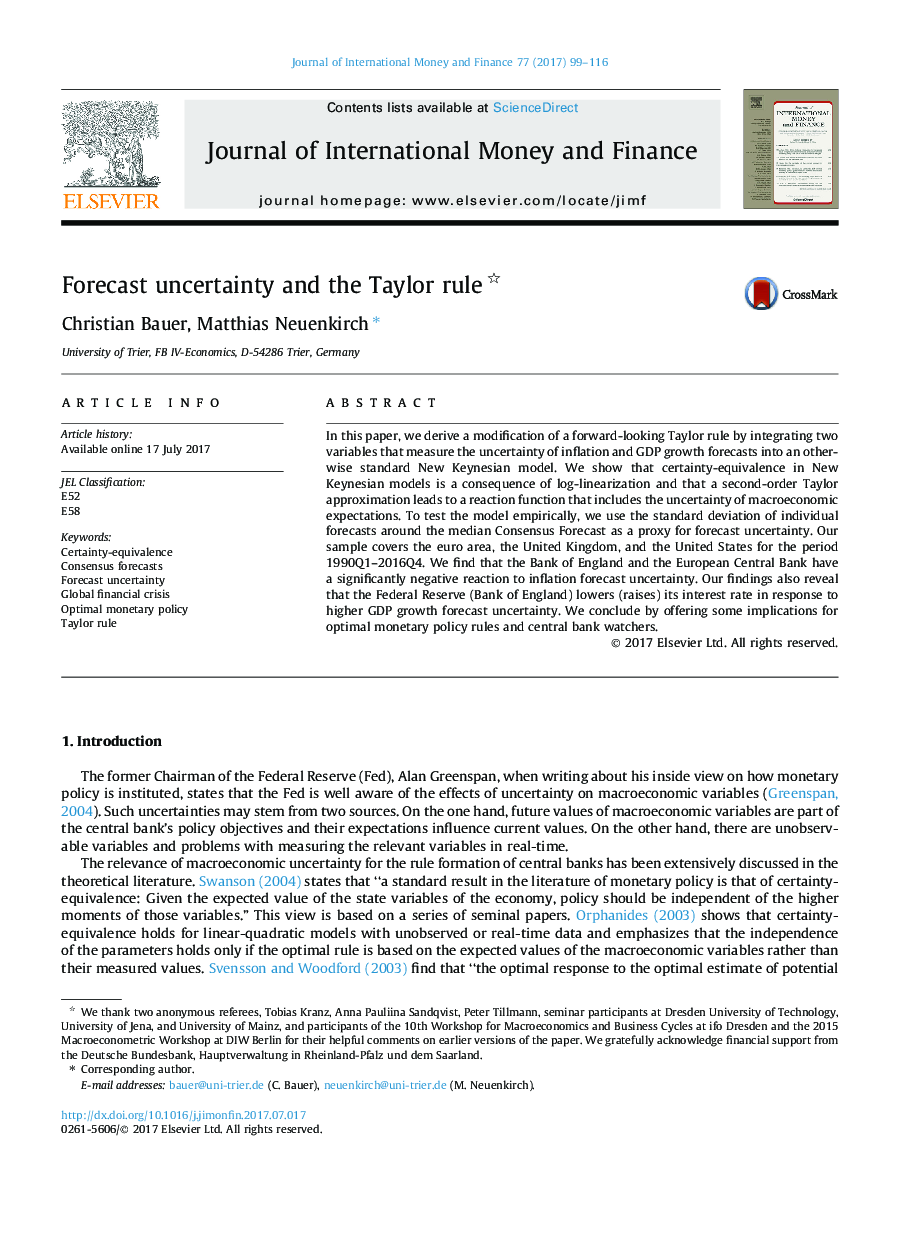| Article ID | Journal | Published Year | Pages | File Type |
|---|---|---|---|---|
| 5101092 | Journal of International Money and Finance | 2017 | 18 Pages |
Abstract
In this paper, we derive a modification of a forward-looking Taylor rule by integrating two variables that measure the uncertainty of inflation and GDP growth forecasts into an otherwise standard New Keynesian model. We show that certainty-equivalence in New Keynesian models is a consequence of log-linearization and that a second-order Taylor approximation leads to a reaction function that includes the uncertainty of macroeconomic expectations. To test the model empirically, we use the standard deviation of individual forecasts around the median Consensus Forecast as a proxy for forecast uncertainty. Our sample covers the euro area, the United Kingdom, and the United States for the period 1990Q1-2016Q4. We find that the Bank of England and the European Central Bank have a significantly negative reaction to inflation forecast uncertainty. Our findings also reveal that the Federal Reserve (Bank of England) lowers (raises) its interest rate in response to higher GDP growth forecast uncertainty. We conclude by offering some implications for optimal monetary policy rules and central bank watchers.
Keywords
Related Topics
Social Sciences and Humanities
Economics, Econometrics and Finance
Economics and Econometrics
Authors
Christian Bauer, Matthias Neuenkirch,
